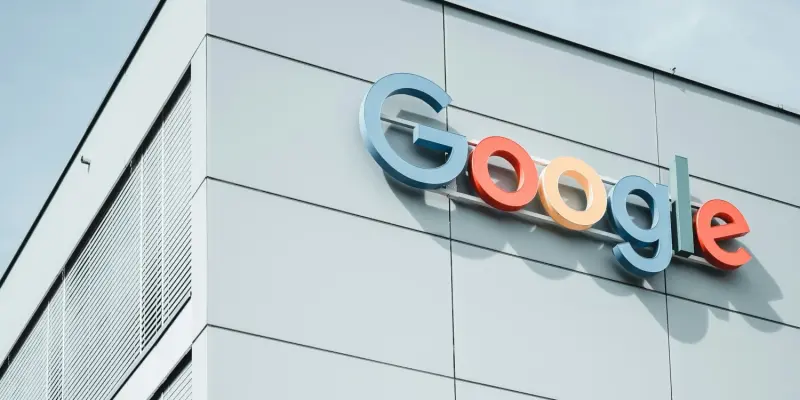The recent adjudication against Google is reverberating across the tech industry with implications that could reshape innovation practices. In one of its most pivotal antitrust cases, the Department of Justice (DOJ) scrutinized Google’s dominance within the ad tech sector, specifically targeting its strategy of interweaving products across the ad server and ad exchange markets. On the surface, Judge Leonie Brinkema’s ruling appeared to challenge established norms concerning tech advancements. However, finer details of her ruling raise questions about its impact on technological progress, especially in emerging fields like artificial intelligence and quantum computing.
Legal Controversies Surrounding Google’s Market Practices
Assessing the Monopoly Allegations
Central to Judge Brinkema’s decision was the assertion that Google’s approach to integrating its ad tech products constituted monopolistic behavior. The DOJ’s definition of the “open web display” market, though controversial, aimed to delineate the extent of Google’s market dominance. It faced criticism for excluding mobile app advertising from this landscape, arguably skewing perceptions of Google’s true influence in the larger digital advertising milieu. While the DOJ contended Google’s monopoly power, critics argued that its market dominance did not inherently suggest an absence of competitive advantages. Google’s history of innovating the ad tech sector is impressive, with display ad spending soaring over the years. Despite accusations, its contributions might signify healthy competitive practices rather than monopolistic suppression.
Examination of Interoperability Choices
Judge Brinkema’s application of the Sherman Act’s “tying” standard dominates discussions on Google’s interoperability decisions with AdX and DFP. According to the ruling, Google’s interoperability choices ostensibly limited access for rival servers. Nevertheless, legal analysts questioned whether this framework truly addresses the complexities of Google’s ad tech operations. Under Supreme Court precedent, evidence should be presented that harms both publishers and advertisers. Brinkema’s judgment chiefly focused on transactions within the ad exchange market, potentially overlooking subtleties that could favor Google’s operational methodologies under scrutiny. This examination not only challenges the ruling’s alignment with established legal precedents but also raises questions about whether it hampers or supports innovative practices in tech spheres.
Broader Implications for Innovation in Tech
Effects on Digital Advertising Growth
Critics of the ruling have dismissed its disregard for Google’s rationale behind foundational ad tech practices, where it aimed to protect its technologies from exploitation by competitors without substantiated contribution. Analysts noted that Google’s innovations fostered remarkable growth in digital advertising, with display ad spending undergoing explosive growth since its inception. Such a trajectory, through potentially monopolistic but innovative conduct, accentuates the possibility that Google’s practices contribute positively to market dynamics, catalyzing broader advancements within digital sectors. The continued growth of the ad tech industry suggests that innovation persists amid accusations, which challenge the notion of monopolistic limitations on technological progress.
Risk to Tech Leadership in Emerging Fields
The reverberations of Brinkema’s ruling may extend far beyond the immediate ad tech sector, with potential implications for America’s leadership in advancing technologies including AI and quantum computing. Should Google face enforced divestitures of its cutting-edge tools, the risk of deterring tech progression becomes palpable. Divestiture orders could inadvertently stifle innovations critical to maintaining competitiveness within global technological arenas, potentially influencing long-term strategic planning across tech industries. Analyzing this aspect underscores the need for reevaluated strategies in handling antitrust cases within such high-stakes sectors, ensuring continued leadership without compromising essential technological innovations.
Conclusion: Reflecting on Judicial Impacts and Future Considerations
The recent judgment against Google is creating ripples throughout the tech industry, carrying potential consequences that could reshape innovation strategies. In a prominent antitrust case, the DOJ has probed deeply into Google’s commanding presence in the ad tech sector, with a particular focus on its tactics of integrating products across the ad server and ad exchange domains. At first glance, Judge Leonie Brinkema’s decision seemed to challenge the industry’s traditional norms regarding tech progression. Nonetheless, a closer examination of her ruling brings forth discussions about its actual influence on technological advancement, notably in groundbreaking areas like artificial intelligence and quantum computing. This creates a dialogue on how antitrust movements might intersect and potentially steer the direction of emerging technologies, posing vital questions about balances between dominance and innovation within the tech sphere.

